The 2012 MacBook Air (11 & 13-inch) Review
by Anand Lal Shimpi on July 16, 2012 12:53 PM EST- Posted in
- Apple
- Mac
- MacBook Air
- Laptops
- Notebooks
Keyboard and Trackpad
The keyboard on the 2012 MacBook Air is the same as the 2011 model. You get a full sized keyboard on both the 11 and 13-inch models, with the alphanumeric keys measuring ~15 x 15mm. The function keys are half height on the 13 and even smaller on the 11, but there's no sacrifice in key size otherwise. Key travel and physical feedback are both as good as they can get on a chiclet-style keyboard. As Apple has now fully transitioned to this style of keyboard across all of its Macs, I can't really say I have any complaints about it. Apple's keyboard remains one of the best on the market.
The dedicated power button from the older Macs is gone and replaced with a power key that looks like another function key. The power key is functionally no different than the old power button - tap to turn on, hold to power down in the event of a hard lock.
The 2012 keyboard is nicely backlit, just like on every MacBook Air but the 2010. Apple offers fine grained controls over the keyboard backlight (16 adjustable levels). You can either choose to control it on your own or let the ambient light sensor control the intensity of the keyboard's backlight.
We spend so much time pointing out poor clickpads in the latest Ultrabooks that it's important to mention just how good the clickpad is in the MacBook Air. Apple continues to use the top hinged design on its glass covered clickpad. Clicks are easier towards the bottom of the pad than at the top where the hinge is. The clickpad is glass covered which makes it very smooth and comfortable to use. Finger rejection is handled extremely well under OS X, accidental clicks are very rare. I typically keep my thumb on the clickpad, near where the right mouse button would traditionally be, and mouse around with my index finger. While I normally have issues with this usage model on most of the clickpads I use, Apple's implementation is both the exception and the benchmark. It just works.
USB 3.0 Performance
USB 3.0 is alive and well on the new MacBook Air. Both ports support the standard and both OS X and the hardware supports the USB Attached SCSI Protocol (UASP). I have noticed that USB device compatibility is more finicky on the MacBook Air compared to the rMBP. Most devices seem to work fine but Kingston's HyperX Max 3.0 for example wouldn't work, although it worked fine on the rMBP. The hardware is actually detected by OS X, the drive simply never appears to Disk Utility or in Finder. A few folks have noticed something similar with other drives on Apple's support forums but the issue doesn't seem to have widespread implications.
USB 3.0 performance however is just as good as on the rMBP. I still need to grab a UASP enabled USB 3.0 device with 6Gbps SATA support to really stress the interface, but using Seagate's GoFlex USB 3.0 drive and a Kingston HyperX SSD in place of the mechanical drive I'm able to hit around 260MB/s:

Thunderbolt support comes courtesy of a 4-channel Cactus Ridge controller. The Thunderbolt port continues to be on the opposite side of the machine from the power connector. Anyone who owns a Cinema or Thunderbolt Display will bemoan the continued use of this configuration.
FaceTime HD Camera
Last year Apple introduced a 720p FaceTime HD camera to its MacBook Pro. The 2012 MBA inherits the same camera. Image quality remains acceptable as long as you're in a room with not terrible lighting.
Most of the Ultrabooks I play with these days try to mimic the FaceTime HD experience by using a 720p sensor. Arguably just as important as the sensor is the software that goes along with it. Photo Booth and Apple's FaceTime app are both extremely simple and quick to launch. I can't stress the importance of getting little details like this right when selling to general consumers.
SD Card Performance
The SD card reader on the 13-inch MacBook Pro had no compatibility issues with Patriot's EP Pro UHS-I SD card. Max performance of the reader appears to be capped at 40MB/s however:
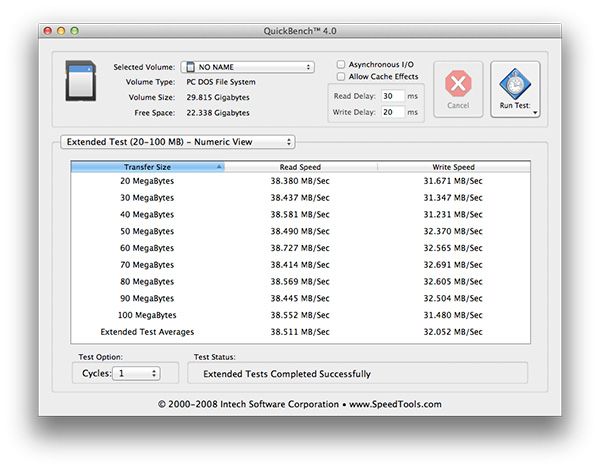
The rMBP by comparison can deliver more than 80MB/s in the read portion of this test. Even writes are faster at ~40MB/s on the rMBP compared to around 32MB/s here. It's a lot of these little things that contribute to the differences between Apple's MacBook Air and Pro lines.
WiFi Performance
Wireless connectivity remains unchanged from last year's model. Broadcom is on 802.11n WiFi duty with its BCM4322. Both 2.4GHz and 5GHz bands are supported. The same 2x2:2 configuration (2 send and receive antennas with 2 spatial streams) remains from last year as well.

I ran the 13-inch MacBook Air through the same three location WiFi test that I put the rMBP and 2011 MBP through, on both 5GHz and 2.4GHz. Performance on 2.4GHz was unusually low on the Netgear WNDR4500 I usually test with (10 - 20Mbps regardless of location) so I had to switch to the previous generation Apple Time Capsule to ensure there was nothing wrong with the notebook itself. All of the 2.4GHz MBA numbers have a star next to them to indicate that they aren't totally comparable as they're using a different AP. The 5GHz numbers all came from the Netgear however.
| Location 1 | Location 2 | Location 3 | |
| 2011 MacBook Pro (2.4GHz) | 124.0 Mbps | 12.6 Mbps | 61.6 Mbps |
| Retina MacBook Pro (2.4GHz) | 117.9 Mbps | 87.6 Mbps | 44.0 Mbps |
| 2012 MacBook Air (2.4GHz) | 95.7 Mbps* | 75.2 Mbps* | 31.2 Mbps* |
| 2011 MacBook Pro (5GHz) | 186.8 Mbps | 154.6 Mbps | 24.7 Mbps |
| Retina MacBook Pro (5GHz) | 227.7 Mbps | 156.8 Mbps | 33.7 Mbps |
| 2012 MacBook Air (5GHz) | 159.4 Mbps | 97.0 Mbps | - |
Overall WiFi performance is decent but obviously not as good as what you get from a MacBook Pro. Looking back at the results I almost wonder if the 2011 MBP wasn't showing some of these weird 2.4GHz issues on the Netgear router as well.
In the best conditions on 5GHz you can hit around 160Mbps, but you pretty much have to be right next to a good AP for that to work. Across a large room or in an adjacent one just under 100Mbps is possible on 5GHz as well. Go further out and you'll have to switch over to 2.4GHz.
There are no wired network options by default, however Apple's Thunderbolt to Gigabit Ethernet adapter works just fine on the new Air as well as the rMBP.
MagSafe 2
MagSafe 2 makes an appearance on the new MacBook Air, although it's curiously absent from the non-retina MacBook Pro. Eventually I'd expect all Macs to use MagSafe 2. The current state of things is likely temporary fragmentation. Similar to the rMBP, the actual power adapters themselves haven't changed: 45W is all you need for both systems.
Ivy Bridge on Air
Apple keeps its CPU options pretty simple and straightforward. You get a choice of three different CPUs, all dual-core, all rated at a 17W TDP. The Core i5-3317U comes standard in the 11, the i5-3427U comes with the 13, and both systems can be upgraded to the Core i7-3667U.
The breakdown between the chips is below:
| Apple 2012 MacBook Air Comparison | |||||
| 1.7GHz dual-core | 1.8GHz dual-core | 2.0GHz dual-core | |||
| Standard On | 11-inch MBA | 13-inch MBA | Optional for Both | ||
| Intel Model | Core i5-3317U | Core i5-3427U | Core i7-3667U | ||
| Base Clock Speed | 1.7GHz | 1.8GHz | 2.0GHz | ||
| Max SC Turbo | 2.6GHz | 2.8GHz | 3.2GHz | ||
| Max DC Turbo | 2.4GHz | 2.6GHz | 3.0GHz | ||
| L3 Cache | 3MB | 3MB | 4MB | ||
| AES-NI | Yes | Yes | Yes | ||
| VT-x | Yes | Yes | Yes | ||
| VT-d | Yes | Yes | Yes | ||
| TDP | 17W | 17W | 17W | ||
| Processor Graphics | Intel HD 4000 | Intel HD 4000 | Intel HD 4000 | ||
| GPU Clock (Base/Max) | 350/1050MHz | 350/1150MHz | 350/1150MHz | ||
The Core i7 upgrade is likely worth it if this is going to be your primary system for an extended period of time, particularly if it's acting as a desktop replacement. As a mobile device the standard CPUs are quite fast. If you're an annual upgrader, save your money, but if you're going to hold onto the system for a while and do a lot of heavy work on it, the upgraded CPU is probably worth it.
There is a known bug with the upgraded CPU under Windows today. Turbo Boost is disabled under Windows on the 3667U, although it's fully functional under OS X. Apple is aware of the problem and I'd expect a fix at some point, but there's no indication of when.


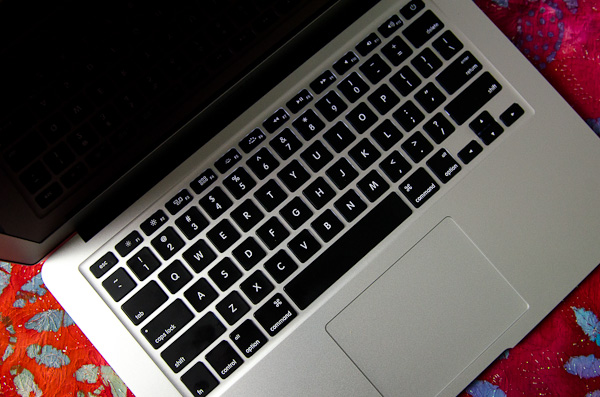
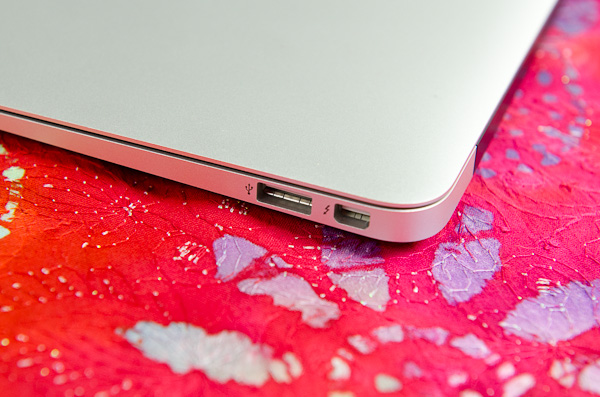

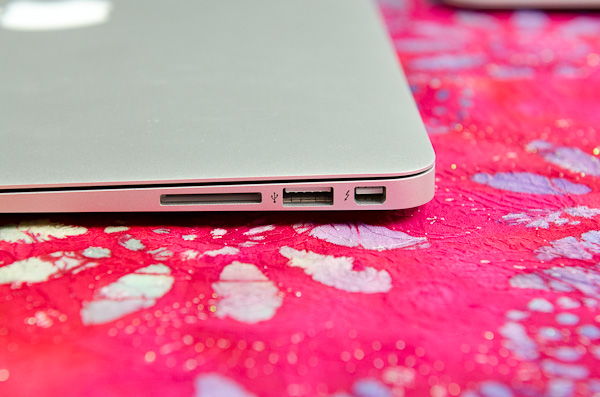
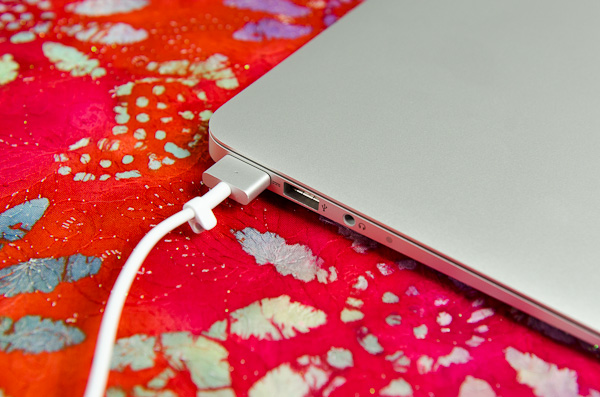








190 Comments
View All Comments
LuckyKnight - Monday, July 16, 2012 - link
I've contemplated a MBA for some time - however I wish they would make a MacBook Pro 13" with dedicated graphics like the ASUS UX32VD.The MBA only has 1 thunderbolt connector, which means there's no cheap way of connecting my existing DVI monitor, HDMI to my TV and gigabit ethernet all at the same time (if that is possible at all).
The MBA also presumably suffers from the 23.967Hz bug as it uses Intel graphics. So it's use as a XBMC client is reduced for me.
I don't want a 15" model any more. This is just too big for me.
The MBA is a very nice product. I would consider the ASUS if they keyboard didn't bend? and it was available in the UK! Despite the faults, still considering it.
If ASUS were to resolve their issues I would probably get that however.
Elwe - Tuesday, July 17, 2012 - link
"The MBA only has 1 thunderbolt connector, which means there's no cheap way of connecting my existing DVI monitor, HDMI to my TV and gigabit ethernet all at the same time (if that is possible at all)."This is true. But you do have a couple of options. One is to use the Apple USB to Ethernet Adapter (http://store.apple.com/us_smb_78313/product/MC704Z... It was made for prior years' models, and it will only 10/100Mb/s. Not anywhere close to ideal, but there it is.
Your other options is to wait and see if something with the ASIX AX88179 chip (or some such) gets released (http://www.asix.com.tw/products.php?op=pItemdetail... I guess USB 3.0 to GigE is not really desired by the market (I guess because most people are either already in a tower and so have other options or are fully OK with wireless).
In this form factor, one has to ask how many high-speed sports are realistic . . . Three? If so, perhaps they have it right (two USB 3.0 and one Thunderbolt given how much people have been screaming for USB 3.0). Or perhaps it should be the other way (I think I would personally rather have the two Thunderbolt and do use either an adapter from Thunderbolt or a USB hub when I need two or more USB ports). Four? Well, I am not sure I know of any Ultrabooks that that this configuration but it would be nice.
reactor - Monday, July 16, 2012 - link
I have a previous gen MBA and tried out the new one in store. Not nearly enough of a leap for me to think about upgrading. Hopefully Haswell comes through with the supposed GPU bump(and maybe, hopefully, a retina display), my old MBA handles everything I need it to do except graphics heavy things and I like the form factor too much to go up to the 15" retina.KPOM - Monday, July 16, 2012 - link
Ivy Bridge is the "tick" part of the tick-tock cycle. It is a small upgrade to the CPU, though the GPU is a bit more of an improvement. Consider that in 2011, Apple switched to the Sandy Bridge from the 5 year-old Core 2 processor. I don't think the 2012 is aimed at 2011 owners as much as it is 2010 and earlier owners, as well as those new to the platform.mastertoller - Monday, July 16, 2012 - link
well with the 2x faster SSD, 8gb ram option, it makes up for it.ltcommanderdata - Monday, July 16, 2012 - link
Great review. How's OpenCL performance like on the HD4000 since that was a sore point with Sandy Bridge that Ivy Bridge corrects? A comparison between the HD4000, 320M and an older discrete GPU like a 330M GT or 6490M would be informative.You've consistently noted in your reviews that Apple's desires for smaller enclosures, GPGPU, and smaller displays are constrained by GPU hardware, particularly from Intel. With Mountain Lion's upcoming release, I wonder if you'll consider examining the software side of things to see how much effort has been put into the GPU drivers and whether they are now up to par with Windows GPU drivers? Once they are released, perhaps a comparison between 10.7.5, 10.8, and Windows 7 with the best recent GPUs from each vendor (Intel HD4000, nVidia GT 650M, AMD 6970M) and one example of an older GPU that still supports OpenCL (nVidia 8xxx/9xxx or ATI HD4xxx) to see if all Macs are seeing development effort or only recent ones. Ideally the benchmarks would not only be games (Portal 2, SC2, Civ V, and a non-Source Engine shooter or two like Deus Ex Human Revolution or Bioshock 2), but also OpenGL accelerated applications (such as Cinebench and Photoshop) and OpenCL accelerated applications (the new OpenCL Photoshop CS5 filters).
De_Com - Monday, July 16, 2012 - link
As a long time reader of AT, I must say how nauseating it has become to read any Apple reviews nowadays, especially Anand's.I believe all objectivity has gone out the window, and that someone else should be given a crack at reviewing Apple products. Both Brian and Dustin have done some cracking reviews lately and I'd like one of these guys to be given a shot at reviewing the next Apple laptop.
Reading the words "awesome", "amazing","infatuated", "it just works"...etc, the reviews have morphed into what seems like some weird sales pitch, seriously am I the only one to notice this?
You'd be hard pressed telling this review apart from the sales blurb direct from the Apple website.
Whenever there's a bad word to be said, like f/f camera, wifi, there are immediate excuses made overlooking them. The camera is crap, unless you've excellent lighting, again glossed over with "well the software is easy and starts quickly". I could go on.
Don't wanna overgripe the situation, most reviews are excellent and well informed, but Anand's Apple reviews have just got so lopsided lately that they have become hard to stomach.
Please try and bring back the objectivity, it's what brought me here in the first place.
KPOM - Monday, July 16, 2012 - link
"As the MacBook Air retains its TN display, for the first time we can actually say that ASUS' Ultrabook offers better viewing angles than the Air. The difference is quite noticeable: ...There's no denying that what ASUS has done is better,"
Yeah, Anand NEVER acknowledges when other products are better than Apple.
De_Com - Monday, July 16, 2012 - link
"The MacBook Air is no longer competing against poorly designed netbooks, but a bunch of clones that are quickly approaching parity across the board. The MBA panel isn't bad, but it needs to be better.Even without a new display however, the MacBook Air continues to be one of the best executed ultraportables on the market today"
Your missing the point, being objective is taking similar products, stepping back and reviewing both in an unbiased way. Never did I accuse Anand of not acknowledging other good products, however I did accuse him of making a bad point followed by glossing over it with a good one, and you sir have made my point for me.
KPOM - Monday, July 16, 2012 - link
On the whole, it IS still one of the best executed ultraportables on the market today. I have seen other ultraportables, and the only ones that I have seen that come close or exceed the Air are the Samsung 9 series and the ASUS Zenbook. They are also priced similarly.Anand's review of the 2011 was far more glowing. This was an evolutionary update, and so the difference isn't as stark, and the display is starting to become more ordinary. However, the rest of the machine is still very good.
Being objective sometimes means praising a product.